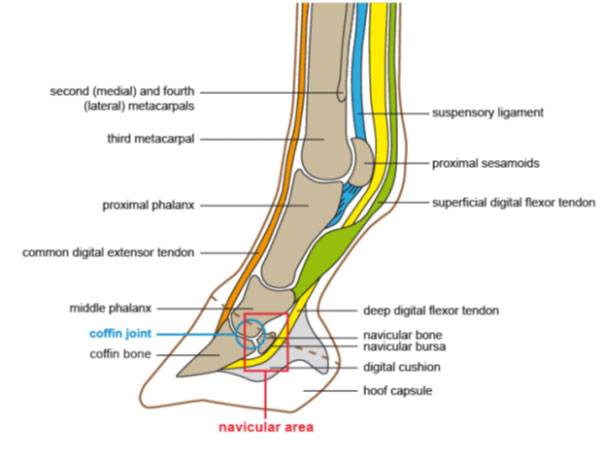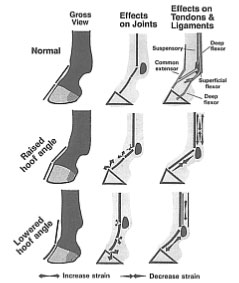I train and run my horses without shoes for reasons that I can demonstrate with scientific research (see below).
Together with my experience as both a professional jump jockey and now as a trainer for many years. My horses have been trained and run without shoes since 2005, with success and winners under rides by top jockeys such as Sir AP McCoy, Richard Johnson and Andrew Thornton among others.
- Injuries to tendons and ligaments, closely followed by lacerations and wounds, are the most prevalent form of injury suffered by racehorses at the racecourse, according to BHA Equine Welfare Database.
- Only one of the horses trained by Simon Earle Racing since 2005 has suffered a tendon injury while racing unshod. Tendon injury can be affected by the angle of the foot and problems such as under-run heels and the horse being long in the toe.
- When trained and raced unshod, greater focus is paid to better foot angles — optimum foot conformation results in less stress on tendons and joints of the lower limbs.
- Tendon lacerations are far worse when horses are shod behind.
Racecourse injuries — the facts:
The BHA’s own Equine Welfare Database details all veterinary problems that are dealt with by racecourse vets in the UK. The data was collected between 2000 and 2009, and shows the frequency of fatality, bleeding from the nostrils, and the most common injuries suffered by horses in National Hunt races.
The 2015 Reducing Injury Risk in National Hunt Racing: The Horserace Betting Levy Board (HBLB) National Hunt Study took data from the Equine Welfare Database and Weatherbys to investigate more than 100 potential risk factors for fatality and the most common injuries suffered by racehorses in National Hunt races. Among the key findings was the following:
- Injury to tendons and ligaments [including lacerations] was the most prevalent problem – and it is important to point out, that for this study, only injuries attended by vets on the racecourse were recorded.
As a trainer, there are many risk factors that we cannot control when running our horses. Injury at the racetrack is, of course, multi-factorial — the ground, race distance, speed of the race and soon are all factors, as well as the horse’s fitness and time to fatigue, how it is schooled and prepared before the race, age, conformation and action, and more. It is also important to note that the BHA Equine Welfare Database figures are based purely on racecourse findings — there is no accounting for injuries at home.
How can trainers minimise injury?
All veterinary research from the Thoroughbred Health Network (see below) points to the fact that prevention is better than cure. With injury to tendons and ligaments, as well as lacerations and wounds, being the most prevalent type of injury in racehorses, it is clear that all trainers have a responsibility to do everything they can to minimise the likelihood of this type of injury. In 2005, I decided to train and run all my horses without shoes because I believed that the shoes were causing or contributing to injuries. The table below shows the results of this change in method.
Simon Earle Racing: horses trained without shoes since 2005
- One tendon injury has occurred in more than 450 runs from 50 different horses, when trained and run nshod [see point 1 below on preventing tendon injuries].
- Several horses arrived in the yard with existing tendon injuries. All have resumed racing, and none has suffered a repeat injury [see point 2 below on re-occurrence of injuries].
- 80% of horses that arrived in the yard with an existing tendon injury after running with shoes improved on previous form after running without shoes [see point 2 below on re-occurrence of injuries].
The Thoroughbred Health Network cites the following research in its Research Review:
Prevention of Tendon Injuries:
- Preventing tendon injuries is better than cure — the structural nature of the tendon means that an injured tendon will not repair to its original structure or function and therefore reinjury is likely. Lower structural elasticity in the tendon structure results in irreversible changes to the tendon. In the racehorse, the Superficial Digital Flexor Tendon (SDFT), which contributes to movement by storing energy, has a low safety margin and is frequently injured [see illustration below. Note position of the SDFT (in green), a typical site for injury caused by a hind limb]. Following injury, the healing process will always result in tissue that is structurally different to original tendon tissue, which reduces elasticity, referred to as “scar tissue”.

The risk of tendon injury is significantly greater in horses that have had a previous injury. Tendon injuries limit long-term performance due to their re-occurring nature. Horses that have previously had Superficial Digital Flexor Tendon damage during racing were found to be approximately 20 times more likely to sustain another SDFT lesion during racing.
- Sudden tendon injury is often preceded by minor damage that is difficult to detect but recognising early signs of injury will reduce the magnitude of irreversible tendon damage — though sudden trauma can occur, for example, due to a blunt strike from another limb, the degeneration of the tendon tends to be progressive and therefore will predominantly take place during training.
- Racehorses that commence training younger have a decreased risk of developing a tendon injury — early moderate exercise during growth has a potential to protect against injuries while in training. The SDFT attains maturity at approximately 2 years old, after which time it has limited ability to adapt to stress and undergoes progressive degeneration. [See link to full study (above) to note the pros and cons of this point.]
- Firmer surfaces are associated with an increased risk of tendon injury — firmer going was a risk factor for damage to the SDFT in both hurdle and steeplechase racing.
Why does Simon Earle Racing have low injury rates in horses that are trained and run without shoes?
Tendon injuries can be caused by multiple factors and several associated risks are identified, of which there are a few within the trainer’s control. Simon Earle Racing focuses on foot conformation, on the principle that it is much easier to maintain optimum angles without shoes:

(source Anvil Magazine, 1998)
The risk of suffering from a superficial digital flexor tendon injury increased with increasing fetlock joint angle1
- Research has indicated the importance of foot conformation suggesting horses with long feet and low heels are more likely to suffer a tendon injury2
Tendon injury is affected by the angle of the foot
- Injury rates are low due to greater focus on better foot angles — optimum foot conformation results in less stress on tendons and joints of the lower limbs
- Horses long in the toe have an increase in stress on their tendons and joints
- The frog of the horse’s foot is designed to be weight bearing to dissipate impact energy in the structure of the foot, which is not the case in horses that are shod3
- Collapsed (under-run) heels are a common problem in the thoroughbred and are associated with an increased risk of musculoskeletal injury, as they change biomechanics and load distribution
1 Weller R et al, 2 Pinchbeck, 3 R Bowker (Michigan State University)





 Facebook
Facebook Instagram
Instagram Twitter
Twitter